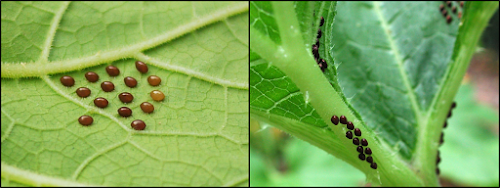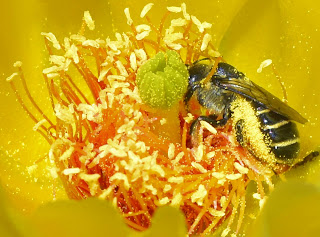Act Now to Control Squash Bug Populations

Southwest Yard & Garden Squash bug eggs on leaves and stems. Photo credits Bdm23, Wikimedia Commons (left) and Pollinator, Wikimedia Commons (right). Squash bug nymphs on a squash blossom (photo by Pollinator, Wikimedia Commons). Mature squash bug. Photo credit Molly Jacobson, Bugguide.net. https://bugguide.net/node/view/567815 Question: Squash bugs decimated my plants and my crop last summer. What should I be doing now to prevent this from happening again? - Sarah H., Las Cruces Answer: You are not alone, and I’m glad you’re already gearing up. Last year I addressed multiple questions about controlling squash bugs in September and October columns. However, by then, most squash bug problems were beyond help, and I promised to address this issue earlier this year. This week, I’ve collected recommendation snippets from archived columns going all the way back to 2008. Click these links to go to the full columns, or scroll down to get the gist: "

